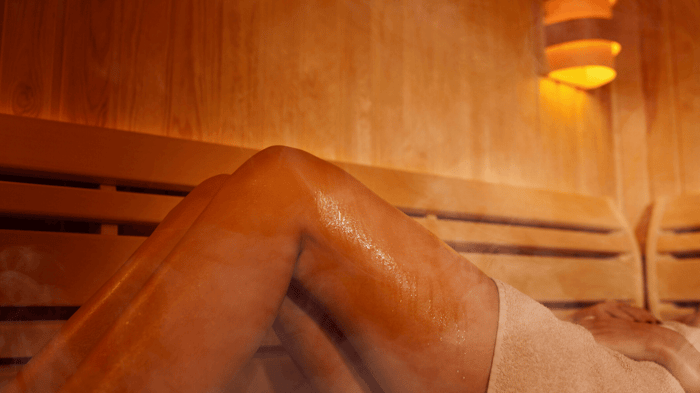
There are so many great reasons to add an infrared sauna at home, as well as sauna bathing to your regular daily routine, especially during a pandemic. Better sleep, improved cardiovascular health, mood regulation, detoxification and pure enjoyment await new sauna bathers, and the big immune boost from sauna bathing, in particular, is relevant and needed right now.
Since most gyms and spas are closed and social distancing will likely outlast stay-at-home restrictions, it’s a perfect time to get set up with an infrared sauna at home for your personal or family use. There are many different types of home infrared saunas available for the home depending on your needs, your budget and the amount of space you have available. You can get more information about purchasing a professionally-crafted home sauna in a previous post. If you would prefer to try out infrared saunas before going all-in on a cabin or you crave DIY customizability, read on below for information on how to build an infrared sauna at home!
I’ll walk you through each component, what your options are and how to set it up!
- Infrared Lightbulbs: For a basic sauna we recommend 4 bulbs, though I have 5 in mine: I put one down low to warm my feet! The lightbulbs are the most important part of your near infrared sauna experience, since they provide the heat. We like RubyLux NIR bulbs, which have a peak wavelength at 850nm, and TheraBulb NIR bulbs. With your DIY sauna you won’t be locked into any one kind of bulb, so try a few until you find your ideal brightness, warmth and light angle.
- Lamp Clamps: You’ll need a heavy-duty light socket for each bulb that can handle both the power and the temperature of the bulbs. They should be rated for 250w bulbs and have ceramic sockets. Look for a light socket with at least a 10-inch reflector and bulb guard. The guards are important, since the bulbs get very hot! Consider also purchasing an extra bulb + clamp: I love setting up my extra to move around the house with me when it’s freezing or I need extra heat therapy on a sore or injured body part.
- Stand: To set up the sauna, attach the lamp clamps onto a sturdy structure that will support them. One easy choice is a free-standing shoe rack, which is lightweight and sturdy, and has wheels so it can be moved around. You could also build a wooden frame to use or be creative. One key point is that you want to make sure none of the materials used in your sauna are coated in chemicals that can release into the air when heated and create toxic fumes. If you use wood make sure it’s all natural. Experiment with different light configurations, with the goal of light hitting every part of your body evenly without heat focusing on your head. Make sure that the lamp clamps are securely attached to your sauna stand since these bulbs and lamp clamps will get very hot.
- Power Strip: You will need a heavy-duty power strip with a surge protector that can handle the load of the bulbs. You will plug all the lamps into the power strip. I have an 8-outlet strip with a 8 ft. cord on mine. Choose the length of cord that you need based on where the sauna lamps will be used and the distance from an outlet.
- Curtain or Canopy: You’ll want a small space to use your sauna in, both for privacy and comfort and also to heat the air around you. A small bathroom or a big closet could be the perfect space. If you don’t have a suitable room you could create a small space in a larger room with a curtain or by setting up a tent or canopy over your sauna. It’s important to use something heavy enough to trap the heat, but also not made with chemicals that could leach into the air when heated. A natural canvas would be perfect.
I hope this article has been helpful! Remember to fully utilize the customizability of DIY projects, and adjust your sauna until it suits your unique needs. Good luck building your custom home sauna and happy sauna bathing!
To purchase our DIY home sauna-in-a-box click here. If you have any questions, leave a comment and our team of sauna specialists will get back to you!

.JPG)


